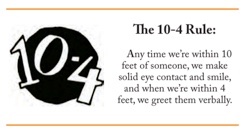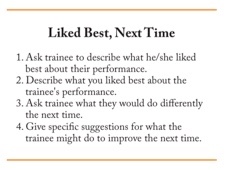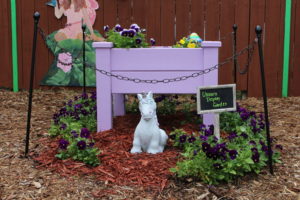
Tools for Seasonal Hiring, Training and Customer Service
We’re in the food business at Zingerman’s, ranging from specialty foods and amazing sandwiches at the Deli, artisan breads and pastries at the Bakehouse, small batch cheese and gelato at the Creamery, to any of the foods shipped to your door from Zingerman’s Mail Order. And like you, and many in our industry, we’re a very seasonal business!
While our season may be different than that of a garden center or landscaper, the lessons we’ve learned from over 35 years of seasonal hiring and training have proven their worth for clients in all different industries with all different seasons.
One example: our Mail Order business typically goes from a full-time staff of 80 to 90 year-round to over 400 for the months of our busy season, in this case around the end-of-year holidays. Fifty percent of their $16 million in annual sales come in the months of November and December, and 50% of THAT is in the two weeks leading up to Christmas.
Now, do you think that when a customer calls during the height of the holiday season, they are going to be extra patient and understanding that the person answering the phone is new and doesn’t have the same depth of product knowledge or order-taking competence? No way!
If anything, they’re MORE stressed out this time of year, and they’re calling Zingerman’s because they trust that they’re buying quality items and are going to be treated really well, regardless of who they’re speaking with.
How do I know? That’s how I got my start at Zingerman’s! When I first applied at Zingerman’s Mail Order to be a seasonal, temporary employee in the Service Center, selling great food over the phone and helping customers across the country, I went because a friend had worked there in a previous year, had a good experience and recommended it to me as a stop-gap job while I was looking for a “real job.”
I had no intention of staying — and it turns out, that was a good thing, because they had no intention of keeping me on! The hiring managers I met with were very explicit about the job not lasting more than three months, maybe four (because if I did a really great job, they would keep me working into January). I thought, “Fine, I’m going to be outta here, anyway.”

That was over 12 years ago! I’ve made my time at Zingerman’s into a career — working at both Mail Order and ZingTrain for about six months before moving to ZingTrain in a full-time, administrative role. I had learned by then that if I applied myself and worked really hard, other doors would start to open, including the opportunity to start to teach customer service to other Zingerman’s employees.
Then, I started working with ZingTrain clients, leading our two-day Art of Giving Great Service Seminar for many years, and ultimately became a full-time trainer about seven years ago.
What that means is my job is to share the sound business practices and boots-on-the-ground tools we use at Zingerman’s for service, training, management and more with other businesses across the U.S. (and Canada!) in a wide range of industries: from plant nurseries and wholesalers, independent garden centers, and bare root tree growers — to natural food co-ops, lawyers, dentists, libraries and more!
What I am going to share with you here are some favorite tips and tools around hiring and training seasonal employees, particularly focused on customer service, which I’ll be speaking about at Cultivate’19.
Hiring
We’ve gotten REALLY good at seasonal hiring! I believe that at the heart of our hiring approach is one thing — clear expectations. We set clear expectations around:
- Job Descriptions — We’re very clear in the job description what the job entails. I don’t want to entice you to apply for a position, only to have you show up for an interview for a job that is something completely different. If you want anyone in your garden center, from the cashier, to a stocker, to the person watering the plants to give great customer service to anyone they interact with, be explicit. Customer Service is in every job description at Zingerman’s, regardless of what your position is.
- Interview Time — If you want a person to show up for a 6 a.m. shift start time, schedule your interview for that time. We learned this the hard way with an overnight shift at our bakery. We were interviewing people during the day, then hiring them to work the shift from midnight to 8 a.m. And people weren’t showing up for their shifts! We started doing these interviews at 2 or 3 a.m., and are now getting the true night-owls who thrive in this shift.
- Interview On-Site — Similarly, if someone is going to be working in a hot, crowded area for much of their shift, consider spending at least part of the interview with them in that environment. If they’re in a cool, air-conditioned office for the interview, the realities of the job can be a rude awakening! In addition, think about how you’re modeling your service expectations for prospective employees.
- Performance Tests — We wrote in a previous article about the 10-4 Rule, one of our service expectations around greeting customers. Another service expectation is what we call the Smile Rule, which is a very straightforward performance test for an interviewee: if they don’t smile when they’re there for the interview, they don’t get hired. I get that people are nervous or anxious when they really want a job — but wouldn’t they want to make the best impression possible? And if they’re not smiling to impress you, odds are that they won’t be smiling on your busiest day, either.

Training
We are extremely passionate about training! What better way to set the employee — and the business — up for success? Here are some of the tried-and-true training tools that we use at Zingerman’s:
- Training Systems — We use a tool called a Training Passport to lay out the training plan for a new employee. It answers “4 Training Plan Questions” that prioritize what a new employee needs to know (and by when), where to get additional training resources, how to determine if they’re ready to move on to the next thing, and what the rewards or consequences of meeting — or not meeting — the expectations. Gone are the days of a manager holding a checklist because the employee has all of that information at hand! (Learn more about the 4 Training Plan Questions.) Side note: We review and update our passports for seasonal positions from year to year, learning from how the last season went. We’ve had a number of clients adopt these as well, including intensely seasonal businesses, like a client in the agritainment industry, a pumpkin patch, where the vast majority of their annual business is in October.
- On-Shift Training — We tend to assume that because someone is really good at their job — knowledgeable about plants, worked for us for a long time, etc. — they would also be a good trainer, and the best person to pair up with a new employee. This couldn’t be further from the truth! Training is a whole different skill set, and while sometimes that high performer is also a great trainer, more often they’re frustrated and annoyed by “having” to train, leading to a bad experience for both parties. Choose someone who wants to share their knowledge, give them the tools they need (including those provided by vendors!) to more effectively bring a new person up to speed, and check in to see how it’s going.
- Performance Coaching & Feedback — I don’t know many people who are enthusiastic about giving performance feedback, let alone to a peer or someone who doesn’t report to them. However, I believe that coaching and constructive feedback is key to developing an employee who will do their best for the business this year, and maybe even come back next year! One tool I particularly like is a proactive, positive feedback model called Liked Best, Next Time.
Saying ‘So Long’
It’s often not considered the most fun part of the employment life-cycle, the parting of ways. Keeping a service mindset helps to set the employee up for future success, whether it’s with you or elsewhere.
- You’re letting them go — I have a colleague who is SO GOOD at this, that when we’ve been out to dinner, she gets hugs from people she fired six months ago. For her, it comes back to clear expectations and feedback. If you’ve been explicit about what you want an employee to do, given them feedback about not meeting expectations as well as a chance to change their behavior, then it’s not a surprise when it gets to the point of letting someone go. “No surprises” is her motto, and I think it’s a great thing for managers to keep in mind.
- The season — and the work — is done — In keeping with the previous tip, no surprises! Let people know very clearly when the season is over, when they can collect their last paycheck, etc. Consider having some kind of celebration — and include all of the folks who contributed to making your season a success. It may be a month or two later, but it will be much appreciated, and remembered.
- Keep in touch with the ones you want back — American Spoon, an artisanal preserve maker in Northern Michigan, works to keep in touch with folks during the off season. Their call center manager sends handwritten notes and gifts of preserves during the middle of their off season — and when they’re ready to hire again, they get a fantastic return rate of employees who already know the products and the way the company works, a major leg up for the next season.
As you can likely tell, we’ve invested a lot of time, thought, and effort into setting our employees up for success — seasonal or otherwise.
We’re often asked “Why do you invest so much time and money training people that are only going to leave after a couple of months?”
I think of my story as a case in point — had I not been given the tools and training to become really good at my temporary job at Mail Order, I wouldn’t have enjoyed myself, and I would not still be a part of the organization today. And even if I hadn’t stayed, and found that “real job” at another organization, I would have taken that great experience and practical, tactical tools for customer service with me!

















 Videos
Videos





